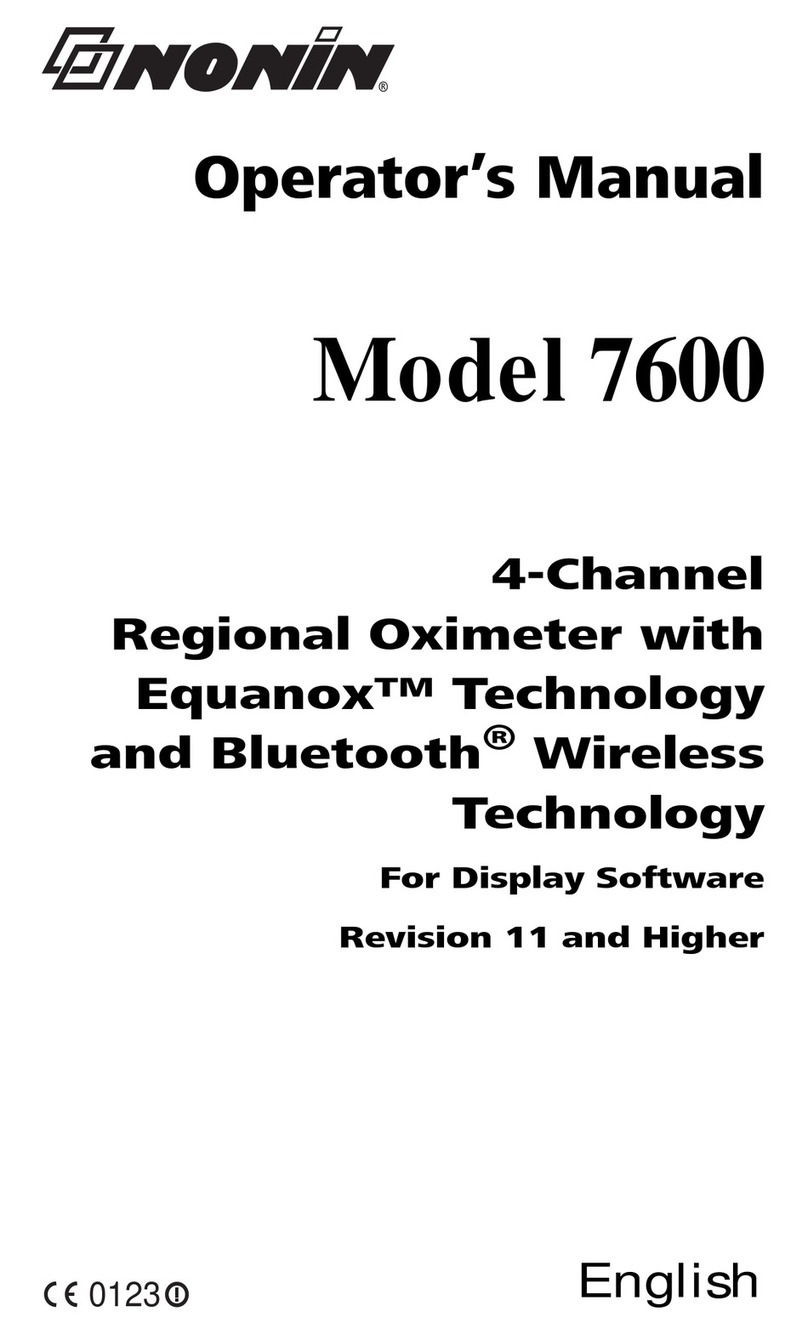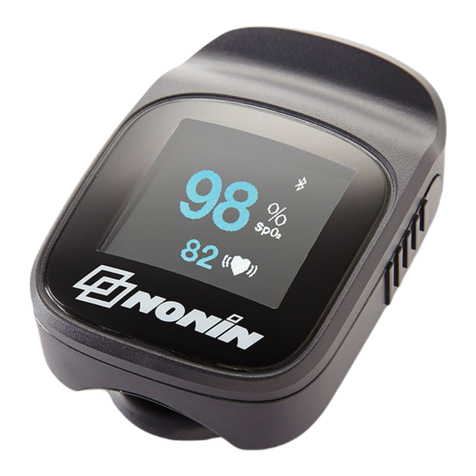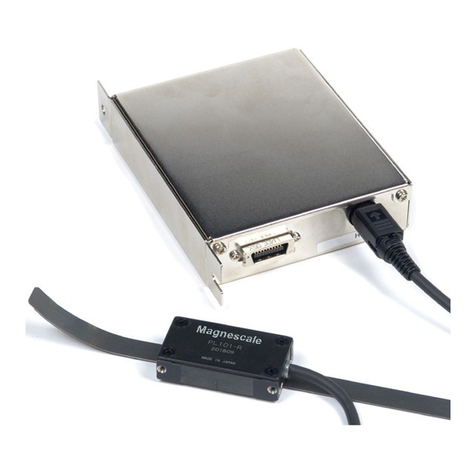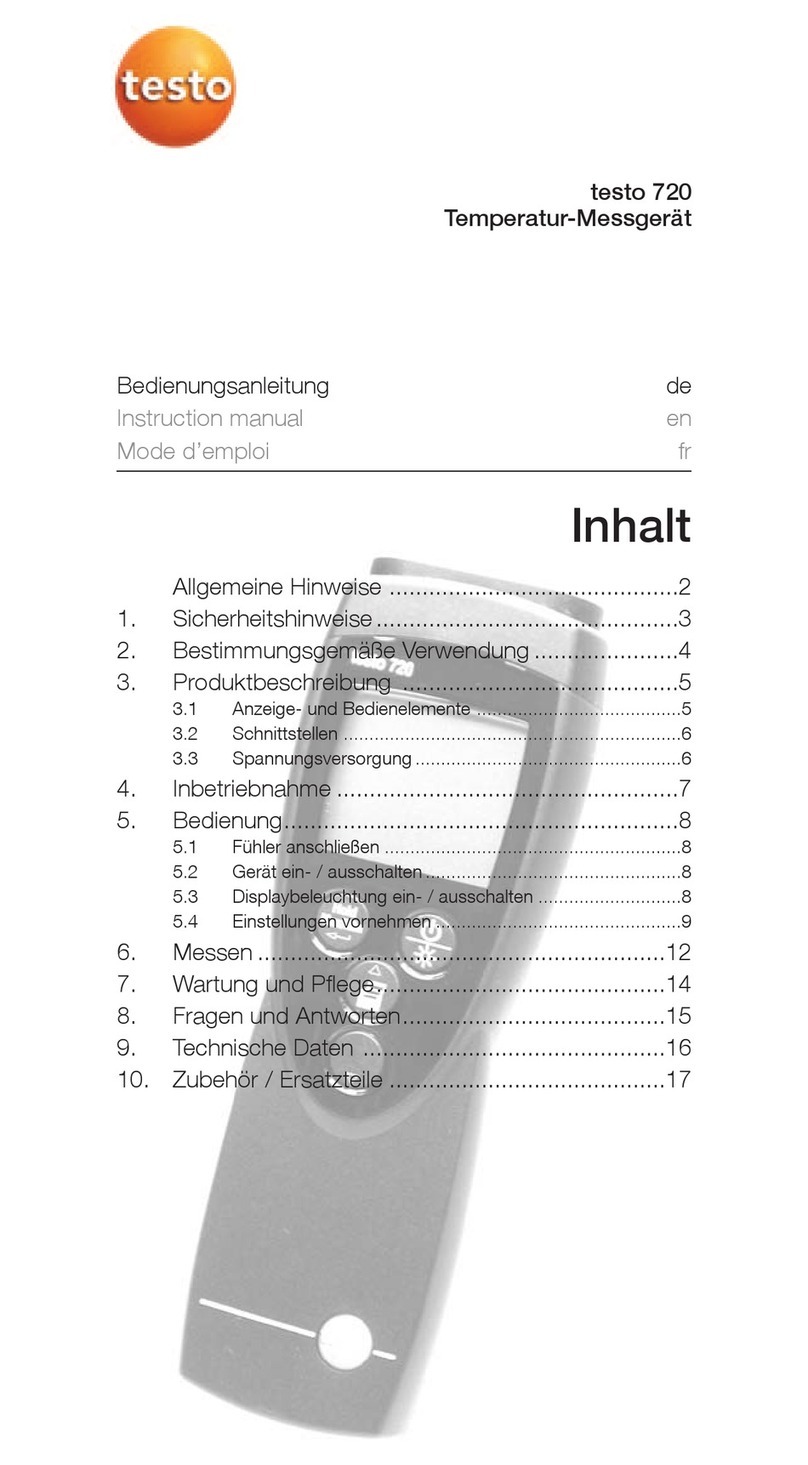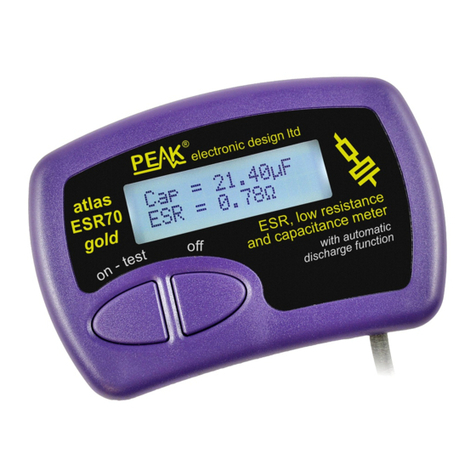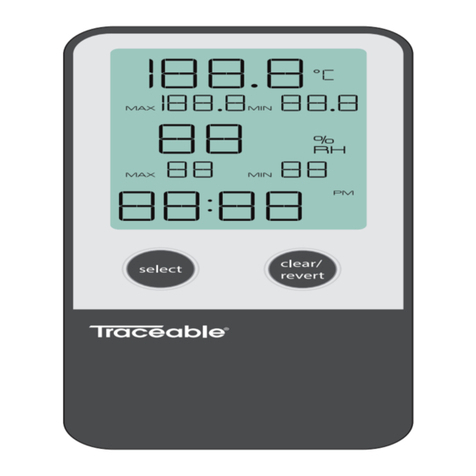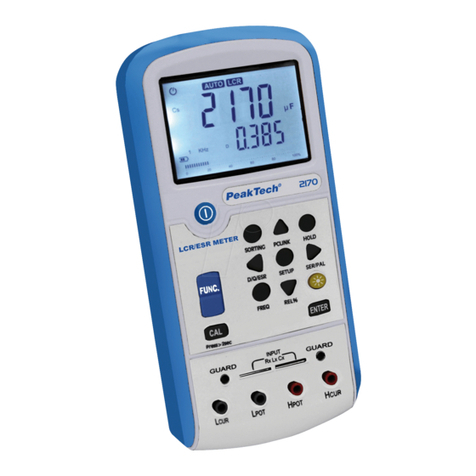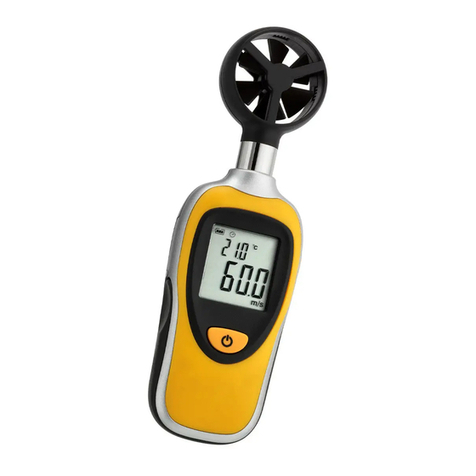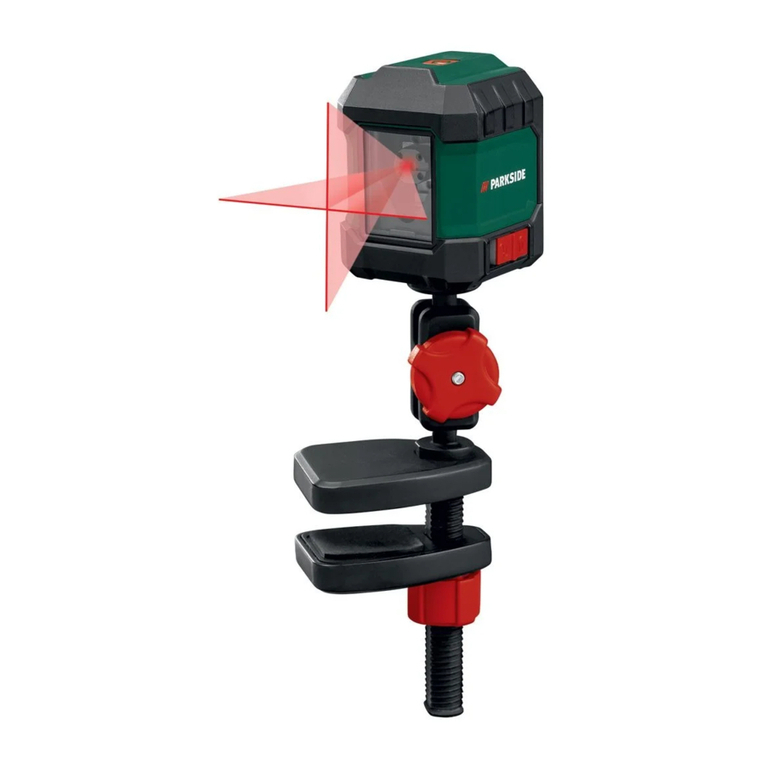Nonin SenSmart X-100 User manual

Operator’s Manual
Model X-100
Universal Oximetry System
0123
English

Nonin® reserves the right to make changes and improvements to this manual and the products
it describes at any time, without notice or obligation.
Nonin Medical, Inc.
13700 1st Avenue North
Plymouth, Minnesota 55441-5443, USA
+1 (763) 553-9968
(800) 356-8874 (USA and Canada)
Fax: +1 (763) 553-7807
E-mail: [email protected]
Nonin Medical B.V.
Prins Hendriklaan 26
1075 BD Amsterdam, Netherlands
+31 (0)13 - 79 99 040 (Europe)
Fax: +31 (0)13 - 79 99 042
E-mail: [email protected]
nonin.com
MPS, Medical Product Service GmbH
Borngasse 20
D-35619 Braunfels, Germany
References to “Nonin” in this manual shall imply Nonin Medical, Inc.
Nonin, EQUANOX, and are registered trademarks of Nonin Medical, Inc.
The Bluetooth word mark and logos are owned by the Bluetooth SIG, Inc. and any use of such
marks by Nonin Medical, Inc. is under license. Other trademarks and trade names are those
of their respective owners.
©2016 Nonin Medical, Inc.
10566-001-02
CAUTION: Federal law (USA) restricts this device to sale by or on the order of a
licensed practitioner.
Follow Instructions for Use.
0123
EC
REP

Contents
i
Indications for Use................................................................................................... 1
Contraindications ................................................................................................................ 1
Warnings ............................................................................................................................. 1
Cautions .............................................................................................................................. 3
Declaration of Conformity with FCC and Canadian Ministry of Health Rules for
Electromagnetic Compatibility ..................................................................................... 5
Federal Communications Commission (FCC) Notice ......................................................... 5
Guide to Symbols..................................................................................................... 6
System Components and Set Up.......................................................................... 12
System Configurations ...................................................................................................... 12
Multiple Channels.......................................................................................................... 12
Single Channel .............................................................................................................. 14
X-100M (Monitor) .............................................................................................................. 15
X-100H (Hub) .................................................................................................................... 18
Connect/Disconnect the Hub......................................................................................18
X-100HH (Hub Holster) ..................................................................................................... 19
Using the Hub Holster ................................................................................................19
X-100SP (Signal Processor)
............................................................................................... 20
Connect a Signal Processor to Hub or Monitor ..........................................................20
Disconnect a Signal Processor from Hub or Monitor .................................................20
Connect/Disconnect an INT-100 Intermediate Cable to the Signal Processor...........21
Connect/Disconnect a Sensor to the Signal Processor..............................................21
Replacing the Lock on the Signal Processor..............................................................22
Cable Clips.................................................................................................................... 22
INT-100 (Intermediate Cable) ........................................................................................... 22
Connect/Disconnect a Sensor to the Intermediate Cable ..........................................23
X-100EC (Extension Cable) .............................................................................................. 23
rSO2 and SpO2 Sensors ................................................................................................... 24
Battery............................................................................................................................... 24
System Operation................................................................................................... 25
Start-up Sequence ............................................................................................................ 25
Sensor Application ............................................................................................................ 26
Monitoring a Patient .......................................................................................................... 26
Operating Screens and Menus ......................................................................................... 27
Monitoring Screen.................................................................................................. 28
Monitoring Screen – Description....................................................................................... 28
Channels ....................................................................................................................... 28
Event Marks .................................................................................................................. 29
Event Mark Table .......................................................................................................... 29
Timescale ...................................................................................................................... 29
Scrolling Cursor and Cursor Values .............................................................................. 30
Graphs........................................................................................................................... 30
Monitoring Screen – Procedures....................................................................................... 31
Set All rSO2 Channel Baselines to Current %rSO2 Values........................................... 31
Mark an Event ............................................................................................................... 31
View the Event Mark Table ........................................................................................... 31
Change the Timescale .................................................................................................. 31

Contents (Continued)
ii
Scroll Through the Timescale ....................................................................................... 31
Graph Set-up ................................................................................................................ 31
Settings Menu Screen ............................................................................................ 32
Settings Menu – Description............................................................................................. 32
Sensor Site ................................................................................................................... 32
Sensor Type ................................................................................................................ 33
Baseline (rSO2 channels only)...................................................................................... 33
Alarm Limits .................................................................................................................. 34
Graph Position .............................................................................................................. 35
Preset #: ....................................................................................................................... 35
Settings Menu – Procedures ............................................................................................ 36
Open the Settings Menu ............................................................................................... 36
Assign a Pre-Defined Sensor Site Name...................................................................... 36
Customize a Sensor Site Name.................................................................................... 36
Clear a Sensor Site Name ............................................................................................ 36
Set Sensor Type ........................................................................................................... 37
Set Individual Baseline Values...................................................................................... 37
Set Alarm Limits............................................................................................................ 38
Set Graph Position(s).................................................................................................... 38
Review/Select a Preset................................................................................................. 38
Presets Menu Screen.............................................................................................. 39
Presets Menu – Description.............................................................................................. 39
Presets Menu – Procedures ............................................................................................. 40
Open the Presets Menu ................................................................................................ 40
Activate a Preset........................................................................................................... 40
Save Current Settings as a Preset................................................................................ 40
Delete a Preset ............................................................................................................. 41
Rename a Preset.......................................................................................................... 41
Lock/Unlock a Preset.................................................................................................... 42
Case Menu Screen.................................................................................................. 43
Case Menu – Description ................................................................................................. 43
Start New Case............................................................................................................. 43
Edit Patient ID............................................................................................................... 43
Case Menu – Procedures ................................................................................................. 43
Open the Case Menu.................................................................................................... 43
Start a New Case.......................................................................................................... 44
Edit a Patient ID............................................................................................................ 44
System Menu Screen.............................................................................................. 45
System Menu – Description.............................................................................................. 45
Brightness ..................................................................................................................... 46
Alarm Volume ............................................................................................................... 46
rSO2 Low Alarm Mode .................................................................................................. 46
Pulse Tone Volume ...................................................................................................... 46
Pulse Tone Source ....................................................................................................... 47
Data Output Modes....................................................................................................... 47
Clear Memory ............................................................................................................... 47
Restore Factory Defaults .............................................................................................. 47
System Information ....................................................................................................... 47

Contents (Continued)
iii
Date / Time.................................................................................................................... 48
Nurse Call Mode............................................................................................................ 48
Bluetooth ....................................................................................................................... 49
Language ...................................................................................................................... 49
Patient ID Request ........................................................................................................ 50
System Name................................................................................................................ 50
Default Preset................................................................................................................ 50
Institution Default Limits ................................................................................................ 50
Institution Password ...................................................................................................... 51
System Menu – Procedures.............................................................................................. 51
Open the System Menu................................................................................................. 51
Adjust the Display Brightness........................................................................................ 51
Adjust the Alarm Volume............................................................................................... 52
Set the rSO2 Low Alarm Mode ...................................................................................... 52
Adjust the Pulse Tone Volume...................................................................................... 52
Select a Pulse Tone Source.......................................................................................... 53
Set Bluetooth and/or RS-232 Data Output Formats...................................................... 53
Clear the Memory.......................................................................................................... 53
Restore Factory Defaults............................................................................................... 54
Review System Information........................................................................................... 54
Set the Date and Time .................................................................................................. 54
Set-up Nurse Call .......................................................................................................... 54
Enable/Disable Bluetooth Radio.................................................................................... 55
Change Language......................................................................................................... 55
Set Patient ID Request.................................................................................................. 55
Assign System Name .................................................................................................... 56
Select Default Preset..................................................................................................... 56
Set Institution Default Limits.......................................................................................... 57
Change the Institution Password................................................................................... 57
Alarms ..................................................................................................................... 58
High Priority Alarms .......................................................................................................... 58
Medium Priority Alarms ..................................................................................................... 59
Silencing Alarms ............................................................................................................... 59
Error Codes....................................................................................................................... 60
Memory and Data Output Features....................................................................... 61
Memory ............................................................................................................................. 61
Patient Data Output........................................................................................................... 61
Bluetooth Technology.................................................................................................... 62
Bluetooth Connection .................................................................................................... 62
Determine the Bluetooth Address and PIN for the Monitor ........................................62
Bluetooth Security ......................................................................................................... 63
RS-232 Connection to Printer....................................................................................... 63
Using the Dymo Printer ..............................................................................................63
Connecting the Device into a Medical System.................................................................. 64
Data Output Formats......................................................................................................... 64
Nonin 1.......................................................................................................................... 65
Nonin 2.......................................................................................................................... 68
Nonin 3.......................................................................................................................... 69
Nonin 4.......................................................................................................................... 70

Contents (Continued)
iv
Nonin 5 ......................................................................................................................... 71
Printer ........................................................................................................................... 72
SenSmart Download Software............................................................................... 73
System Requirements ...................................................................................................... 73
Installing SenSmart Download Software .......................................................................... 73
Care and Maintenance............................................................................................ 74
Cleaning Instructions ........................................................................................................ 74
Parts and Accessories ........................................................................................... 75
Troubleshooting...................................................................................................... 76
Service, Support, and Warranty ............................................................................ 79
Service and Support ......................................................................................................... 79
Warranty ........................................................................................................................... 79
Technical Information............................................................................................. 81
Manufacturer’s Declaration............................................................................................... 81
Equipment Response Time .............................................................................................. 85
Example – SpO2 Exponential Averaging ................................................................... 85
Testing Summary.............................................................................................................. 86
rSO2 Principles of Operation......................................................................................... 86
SpO2 Principles of Operation........................................................................................ 86
rSO2 Accuracy Testing ................................................................................................. 86
SpO2 Accuracy Testing................................................................................................. 87
Pulse Rate Accuracy Testing (Motion and Non-motion) ............................................... 87
Low Perfusion Accuracy Testing................................................................................... 87
Specifications ................................................................................................................... 88
Transmitter........................................................................................................................ 90
External Monitor Installation Instructions............................................................ 91
Philips Monitors ................................................................................................................ 91
Components ................................................................................................................. 91
VueLink Components................................................................................................. 91
IntelliBridge Components........................................................................................... 91
Connection Specifications ................................................................................................ 91
Connecting the X-100M Monitor to the Philips Monitor .................................................... 92
X-100M Configuration .................................................................................................. 92
Philips Interface Module Installation and Configuration ............................................... 92
Setting Up the Connection – VueLink ........................................................................ 92
Setting Up the Connection – IntelliBridge .................................................................. 94
Philips Monitor Display Configuration ........................................................................... 95
Setup Philips Monitor with VueLink Interface Module to Display
X-100M Numerics................................................................................................ 95
Setup Philips Monitor with IntelliBridge Interface Module to Display
X-100M Numerics................................................................................................ 96
Alerts................................................................................................................................. 97
Patient Alarms .............................................................................................................. 98
Equipment Alarms......................................................................................................... 99

v
Figures
Figure 1. Monitoring Screen Symbols (Four-Channel View)................................................................ 8
Figure 2. System Set Up (≥40 kg Sensors, INT-100, 4 Channels Connected).................................. 13
Figure 3. System Set Up (≤40 kg Sensors, 4 Channels Connected)................................................. 13
Figure 4. System Set Up (≥40 kg Sensors, 4 Channels Connected)................................................. 14
Figure 5. System Set Up (≥40 kg Sensor, INT-100, Single Channel)................................................ 14
Figure 6. X-100M Front View ............................................................................................................. 15
Figure 7. X-100H – Hub ..................................................................................................................... 18
Figure 8. Connect Hub or Signal Processor to Monitor ..................................................................... 18
Figure 9. X-100HH – Hub Holster ...................................................................................................... 19
Figure 10. Insert Hub into Hub Holster .............................................................................................. 19
Figure 11. X-100SP – Signal Processor ............................................................................................ 20
Figure 12. Connect Intermediate Cable or Sensor to Signal Processor ............................................ 21
Figure 13. Signal Processor Lock Replacement................................................................................ 22
Figure 14. INT-100 – Intermediate Cable .......................................................................................... 22
Figure 15. Connect Sensor to Intermediate Cable............................................................................. 23
Figure 16. X-100EC – Extension Cable............................................................................................. 23
Figure 17. Start-up Screen ................................................................................................................ 25
Figure 18. Select a Preset Screen ..................................................................................................... 25
Figure 19. Monitoring Screen with Four Channels Connected (3 rSO2 and 1 SpO2)........................ 28
Figure 20. Event Marks, Timescale, and Scrolling Cursor................................................................. 29
Figure 21. Event Mark Table ............................................................................................................. 29
Figure 22. Graphs.............................................................................................................................. 30
Figure 23. Settings Menu Screen ...................................................................................................... 32
Figure 24. Presets Menu Screen ....................................................................................................... 40
Figure 25. Case Menu Screen ........................................................................................................... 43
Figure 26. System Menu Screen ....................................................................................................... 45
Figure 27. System Information Pop-up .............................................................................................. 48
Figure 28. Bluetooth Information Pop-up........................................................................................... 49
Figure 29. Institution Defaults Pop-up ............................................................................................... 51
Figure 30. RS-232 Serial Data Port ................................................................................................... 61
Figure 31. Sample Label from Dymo Printer...................................................................................... 63
Figure 32. X-100M Connection to Philips Monitor with VueLink ........................................................ 93
Figure 33. Philips Indicator on Model X-100M Display ...................................................................... 93
Figure 34. X-100M Connection to Philips Monitor with IntelliBridge .................................................. 94

vi
Tables
Table 1. Labeling and Packaging Symbols ......................................................................................... 6
Table 2. X-100M Monitoring Screen Symbols and Indicators ............................................................. 8
Table 3. X-100M Features................................................................................................................. 15
Table 4. X-100H Features ................................................................................................................. 18
Table 5. X-100HH Features............................................................................................................... 19
Table 6. X-100SP Features ............................................................................................................... 20
Table 7. INT-100 Features ................................................................................................................ 22
Table 8. Commonly-Used Sensor Site Names.................................................................................. 33
Table 9. Alarm Limit Settings............................................................................................................. 34
Table 10. Factory Default Alarm Limit Settings ................................................................................. 47
Table 11. High Priority Alarms........................................................................................................... 58
Table 12. Medium Priority Alarms ..................................................................................................... 59
Table 13. Error Codes ....................................................................................................................... 60
Table 14. Nonin 1 Data Output Format ............................................................................................. 65
Table 15. Electromagnetic Emissions ............................................................................................... 81
Table 16. Electromagnetic Immunity ................................................................................................. 82
Table 17. Guidance and Manufacturer’s Declaration—Electromagnetic Immunity ........................... 83
Table 18. Recommended Separation Distances ............................................................................... 84
Table 19. Philips Monitor Patient Alarms........................................................................................... 98
Table 20. Philips Monitor Equipment Alarms..................................................................................... 99

1
Indications for Use
Indications for Use
Nonin’s SenSmart™ Model X-100 Universal Oximetry System is a modular system and is
indicated for use in simultaneously measuring, displaying, monitoring, and recording up to
six (6) channels of functional oxygen saturation of arterial hemoglobin (SpO2) and pulse rate
or cerebral or somatic hemoglobin oxygen saturation (rSO2) of blood underneath the sensor.
Patient populations include adult, pediatric, infant, and neonate through the use of SenSmart-
compatible sensors.
The SenSmart system is intended for use in hospitals, long-term care, medical facilities, sleep
laboratories, subacute environments, and Emergency Medical Services (EMS), including
patient transport. The X-100 SenSmart system may be used for spot-checking and continuous
monitoring with patient alarms. The SenSmart pulse oximetry (SpO2) functionality is suitable
for use in both motion and non-motion conditions, including patients who are well or poorly
perfused.
Contraindications
Do not use this device in an MR environment.
Explosion Hazard: Do not use in an explosive atmosphere or in the presence of flammable anesthetics or gases.
This system is not intended to be used simultaneously on multiple patients.
Refer to the applicable sensor instructions for use for additional contraindications, warnings, and cautions.
Warnings
This device is intended only as an adjunct device in patient assessment. It should not be used as the sole basis
for diagnosis or therapy decisions. It must be used in conjunction with other methods of assessing clinical signs
and symptoms.
Use only Nonin-branded SenSmart oximeter signal processors, sensors, and accessories, otherwise patient
injury can result. These sensors are manufactured to meet the accuracy specifications for this device. Using other
manufacturers’ sensors can result in improper oximeter performance.
Inspect the sensor application sites in accordance with the sensor instructions for use to ensure correct sensor
alignment and skin integrity. Patient sensitivity to the sensor may vary due to medical status or skin condition.
Avoid excessive pressure to the sensor application site(s) as this may cause damage to the skin beneath the
sensor.
Always inspect the device before use. Do not use a damaged device or sensor. Before using any sensor, carefully
read the sensor instructions for use, which contains sensor application information for each sensor.
To p re vent i mp ro per pe rfor ma nce and/ or p at ie nt i nj ur y, verify compatibility of the monitor, sensor(s), and
accessories before use.
No modifications to this device are allowed as it may affect device performance.
Verify all alarm settings and limits during system startup to ensure that they are set as intended.
Protect from exposure to water or any other liquid, with or without AC power.
Use the device only with Nonin-specified power supplies.

2
Indications for Use
As with all medical equipment, carefully route patient cables and connections to reduce the possibility of
entanglement, strangulation, or tripping.
For remote monitoring, use the X-100M monitor only within its designated range (approximately 100 meters
(300 feet) spherical radius from monitor to remote location). Moving outside this range may cause missing or lost
data at the remote monitoring location.
Memory is cleared if error code E06 appears on the display screen.
The device presets are deleted if error code E09 appears on the display screen.
The device configuration is deleted if error code E10 appears on the display screen.
This device turns off after approximately 30 minutes when in low battery alarm condition.
If this device is used adjacent to or stacked with other equipment, the device should be observed carefully to
verify normal operation.
The battery pack must be installed at all times while the device is operating—even when operating on AC power.
Do NOT use the device without the battery pack installed.
The use of signal processors, sensors, accessories, and cables other than those listed in the Parts and
Accessories List may result in increased electromagnetic emission and/or decreased immunity of this device.
The device’s Nurse Call and Bluetooth features should not be used as the primary source of alarm notification.
The user must verify the device Bluetooth pairing to ensure the correct patient is remotely monitored.
Ensure all alarm volumes are set appropriately and are audible in all situations. Do not cover or otherwise block
any speaker openings.
This device is a precision electronic instrument and must be repaired by qualified technical professionals. Field
repair of the device is not possible. Do not attempt to open the case or repair the electronics. Opening the case
may damage the device and void the warranty.
The device must be able to measure the pulse properly to obtain an accurate SpO2 measurement. Verify that
nothing is hindering the pulse measurement before relying on the SpO2 measurement.
Operation of this device below the minimum amplitude of 0.3% modulation may cause inaccurate results for SpO
2
.
Readings of this device may be affected by the use of an electrosurgical unit (ESU). Keep electrosurgical/
electrocautery instruments away from the sensors and signal processors, as they may cause damage or result in
erroneous readings.
When defibrillation voltages are applied to the patient, the X-100M monitor may recover to a menu screen. The
X-100M will return to the monitoring screen after the menu screen times out (2 minutes) or with operator
interaction (press Menu button).
It is the user’s responsibility to implement the interface between the nurse call system and the Model X-100M,
and to adequately test the interface between the Model X-100M and the nurse call system to ensure operation.
The X-100M monitor has not been evaluated with specific nurse call systems.
A hazard can exist if different presets are used on multiple X-100M monitors in one care area.
Refer to the applicable sensor instructions for use for additional contraindications, warnings, and cautions.
Warnings (Continued)

3
Indications for Use
Cautions
The value of rSO2 data from the system has not been demonstrated in specific disease states, under conditions
of hemoglobinopathies or clinical conditions that may affect blood volume, or under hypocapnic and hypercapnic
conditions.
When using this device in an operating room, it must remain outside the sterile field.
When mounting the monitor to a mobile pole, mounting the monitor higher than 1.5 meters or mounting more than
2 kilograms of equipment onto the pole may result in tipping, damage to the equipment, or injury.
This equipment complies with IEC 60601-1-2 for electromagnetic compatibility (EMC) for medical electrical
equipment and/or systems. This standard is designed to provide reasonable protection against harmful
interference in a typical medical installation. However, because of the proliferation of radio-frequency transmitting
equipment and other sources of electrical noise in healthcare and other environments, it is possible that high
levels of such interference due to close proximity or strength of a source might disrupt the performance of this
device. Medical electrical equipment needs special precautions regarding EMC, and all equipment must be
installed and put into service according to the EMC information specified in this manual.
Exposure to Radio Frequency Radiation. The radiated output power of the display device is far below FCC radio
frequency exposure limits. Nevertheless, the device must be used in such a way that the potential for human
contact during normal operation is minimized. To avoid the possibility of exceeding FCC radio frequency
exposure limits, remain at least 20 cm (8 in.) away from the display unit’s internal antenna during normal
operation. The monitor has been tested and meets allowed limits for exposure.
This device is designed to determine regional hemoglobin oxygen saturation of blood underneath the sensor
when used with SenSmart regional oximetry sensors. Factors that may degrade performance or affect the
accuracy of the measurement include the following:
This device is designed to determine the percentage of arterial oxygen saturation of functional hemoglobin when
used with SenSmart pulse oximetry sensors. Factors that may degrade pulse oximeter performance include the
following:
Batteries are a fire hazard if damaged. Do not damage, mishandle, disassemble, service, or replace with non-
specified components.
Do not charge Li-Ion batteries at a temperature of 0 °C (32 °F) or less as this may result in significantly reduced
battery life.
Do not apply sensor over open wound, incision, or compromised skin. Inspect the sensor site(s) prior to applying
the sensor(s).
Do not autoclave, sterilize, immerse, or spray this device with liquid or use caustic or abrasive cleaning agents.
Do not use cleaning agents or cleaning products that contain ammonium chloride.
Follow local, state and national governing ordinances and recycling instructions regarding disposal or recycling of
the device and device components, including batteries. Use only Nonin-approved battery packs.
!
- excessive ambient light or direct
sunlight
- excessive motion
- electrosurgical interference
- metal plate or other foreign object in
sensor path
- moisture on skin
- improperly applied sensor
- placement over bony prominence
- incorrect sensor type
- skin barriers used between sensor and
patient skin
- anemia or low hemoglobin
concentrations
- cardiogreen or other intravascular or
tissue dyes
- carboxyhemoglobin and other
dyshemoglobins
- hemoglobinopathies
- billirubinemia and/or icterus (jaundice)
- non-normocapnic conditions or other
conditions that affect blood volume
- excessive ambient light
- excessive motion
- electrosurgical interference
- moisture in the sensor
- improperly applied sensor
- carboxyhemoglobin
- methemoglobin
- blood flow restrictors (arterial
catheters, blood pressure cuffs,
infusion lines, etc.)
- incorrect sensor type
- poor pulse quality
- venous pulsations
- anemia or low hemoglobin
concentrations
- cardiovascular dyes
- dysfunctional hemoglobin
- artificial nails or fingernail polish
- residue (e.g., dried blood, dirt, grease,
oil) in the light path

4
Indications for Use
In compliance with the European Directive on Waste Electrical and Electronic Equipment (WEEE) 2002/96/EC,
do not dispose of this product as unsorted municipal waste. This device contains WEEE materials; please contact
your distributor regarding take-back or recycling of the device. If you are unsure how to reach your distributor,
please call Nonin for your distributor’s contact information.
Data is written continuously to memory when the device is on. If the entire memory is filled, portions of the oldest
record will be overwritten when new data is written.
Setting alarm limits to extremes can render the alarm system useless.
A preset cannot be saved with %rSO2 or %SpO2 low alarm limit settings that are lower than the institution default
settings. %rSO2 and %SpO2 low alarm limits that are lower than the institution defaults will be replaced in the
preset with the institution default setting(s).
A 2-minute alarm silence is automatically engaged at startup.
A functional tester cannot be used to assess the accuracy of the oximeter monitor or sensor.
If this device fails to respond as described, discontinue use until the situation is corrected by qualified technical
professionals.
Between patients, turn the X-100M monitor off (Standby mode) or start a new case (Case Menu). Failure to do so
could result in inaccurate baseline values for the new patient. When the device is turned on or a new case is
started, the monitor clears the baseline values, resets the limits to the default values, and begins a new patient
record in data memory.
For SpO2 monitoring, the device may not work when circulation is reduced. Warm or rub the finger, or reposition
the device.
In some circumstances, the device may interpret motion as good pulse quality during SpO2 monitoring. Minimize
patient motion as much as possible.
Do not connect more than one hub in the system. The system will not function.
Do not use an extension cable between the monitor and the hub. The system will not function.
Duplicate signal processors cannot be used simultaneously and will result in an error message.
Do not connect multiple extension cables between the monitor and a signal processor or between the hub and a
signal processor.
Do not simultaneously touch the accessible connector pins and the patient.
The device has been designed for use within the specified ranges. Use outside of these ranges has not been
tested and may result in improper oximeter performance.
All parts and accessories connected to the serial port of this device must be certified according to at least
IEC Standard EN 60950, IEC 62368-1, or UL 1950 for data processing equipment.
Portable and mobile RF communications equipment can affect medical electrical equipment.
Failure of a network data coupling (serial cable/connectors/wireless connections) will result in loss of data
transfer.
Refer to the applicable sensor instructions for use for additional contraindications, warnings, and cautions.
Cautions (Continued)
!

5
Indications for Use
Declaration of Conformity with FCC and Canadian
Ministry of Health Rules for Electromagnetic
Compatibility
• Nonin Medical, Inc., of 13700 1st Avenue North, Plymouth, Minnesota, 55441, declares under
its sole responsibility that the Model X-100M, to which this declaration relates, comply with
part 15 of the FCC Rules. Operation is subject to the following two conditions: (1) this device
may not cause harmful interference, and (2) this device must accept any interference
received, including interference that may cause undesired operation.
• Ministry of Health (Canada), Safety Code 6: standards include a substantial safety margin
designed to ensure the safety of all persons, regardless of age and health. The exposure
standard for wireless mobile phones employs a unit of measurement known as the Specific
Absorption Rate, or SAR. The SAR limit set by the FCC is 1.6 W/kg.
Federal Communications Commission (FCC) Notice
This equipment has been tested and found to comply with the limits for a class B digital device,
pursuant to part 15 of the FCC Rules. These limits are designed to provide reasonable
protection against harmful interference in a residential installation. This equipment generates,
uses, and can radiate radio frequency energy. If not installed and used in accordance with the
instructions, it may cause harmful interference to radio or television reception, which can be
determined by turning the equipment off and on. The user is encouraged to try to correct the
interference by one or more of the following measures: (1) Reorient or relocate the receiving
antenna, (2) Increase the distance between the equipment and the receiver, (3) Connect the
equipment to an outlet on a circuit different from the outlet where the receiver is connected, or
(4) Consult the dealer or an experienced radio/TV technician for assistance.
The Model X-100M is designed and manufactured not to exceed the emission limits for
exposure to radio frequency (RF) energy set by the Federal Communications Commission of
the U.S. Government. These limits are part of comprehensive guidelines and establish
permitted levels of RF energy for the general population. The guidelines are based on the
safety standards previously set by both U.S. and international standards bodies. This EUT has
been shown to be capable of compliance for localized specific absorption rate (SAR) for
uncontrolled environment/general population exposure limits specified in ANSI/IEEE Std.
C95.1-2005.
The FCC requires the user to be notified that any changes or modifications to this device that
are not expressly approved by Nonin Medical, Inc. may void the user’s authority to operate the
equipment.
NOTE: No modifications to this device are allowed that in any way affect or alter its antenna
or antenna configuration.

6
Guide to Symbols
Guide to Symbols
This chapter describes the symbols that are found on the Model X-100 system components
and packaging. Detailed information about functional symbols can be found in "System
Components and Set Up" on page 12.
Table 1. Labeling and Packaging Symbols
Symbol Description
CAUTION!
Authorized Representative in the European Community.
Consult instructions for use.
Follow instructions for use.
UL Mark for Canada and the United States with respect to electric shock,
fire, and mechanical hazards in accordance with:
• ANSI/AAMI ES60601-1 (2005, 3rd Ed.), CAN/CSA C22.2
No. 60601-1 (2008, 3rd Ed.), ISO 80601-2-61:2011,
IEC 60601-1-8:2006
• UL 60601-1 and CAN/CSA C22.2 No. 601.1
CE Marking indicating conformance to all applicable directives, including
EC Directive No. 93/42/EEC concerning medical devices.
Class II, double insulated
Serial number
IP32
Protected against vertically falling water drops when enclosure is tilted up
to 15 degrees and ingress of solid foreign objects greater than or equal to
2.5 mm in diameter, per IEC 60529.
Direct current
Type BF Applied Part (X-100M, X-100H)
Indicates separate collection for waste electrical and electronic equipment
(WEEE).
Non-ionizing electromagnetic radiation. Equipment includes RF
transmitters. Interference may occur in the vicinity of equipment marked
with this symbol.
Defibrillation-Proof Type BF Applied Part (patient isolation from electrical
shock). (X-100SP)
!
EC
REP
0123
SN

7
Guide to Symbols
Do not discard.
Do not pull on cable. Retract connector and remove.
Lot Number
Catalogue number
Quantity
Date of manufacture
Manufacturer
Non-sterile
Storage/shipping temperature range
Handle with care.
Keep dry.
Medical prescription required.
Use by date
Table 1. Labeling and Packaging Symbols (Continued)
Symbol Description
LOTLOT
REFREF
QTYQTY
NONNON
STERILESTERILE

8
Guide to Symbols
Figure 1. Monitoring Screen Symbols (Four-Channel View)
Table 2. X-100M Monitoring Screen Symbols and Indicators
No. Symbol Description
1example:
A B
Event Marks
Located at the top of the monitoring screen, event marks (A, B, C, D,
etc.) display when the Event Mark button is pressed.
2example:
30MIN
Timescale
Located below the event marks, the timescale shows the amount of data
time displaying on the screen.
3Scrolling Cursor
Located below the timescale, the yellow scrolling cursor allows the user
to view a channel’s rSO2 or SpO2 reading at a specific time on the
trendline.
The scrolling cursor does not display until the Left navigation button has
been pressed.
4Cursor Values
When the scrolling cursor is active, cursor oximetry (rSO2 or SpO2)
values display on the left side of the monitor screen in a yellow box.
NOTE: Pulse rate values are not displayed in the cursor values.
1
23
56
7
8
10
12 13
11
15
16
17
14
4
18 9
19
97
65

9
Guide to Symbols
5Ch Channel
Located at the top of each channel, this indicator shows the channel’s
number (e.g., Ch 1, Ch 2, etc.). If set, the sensor site name displays to
the right of the channel indicator.
6%rSO2
or
%rSO2-T
Regional Hemoglobin Oxygen Saturation
NOTE: %rSO2 displays when an absolute regional sensor is attached
to a signal processor. %rSO2-T displays when a trending regional
sensor is attached to a signal processor.
%rSO2 displays from 0 to 100% when a signal processor receives an
adequate signal from an attached regional sensor.
The channel background display flashes:
•Yellow during medium priority alarm conditions (equipment alarms
and rSO2 values that are 5% or less above the rSO2 low alarm limit).
•Red during high priority rSO2 alarm conditions (set by the high and
low rSO2 alarm limits).
7BL Baseline
When the monitor is turned on, the BL display shows dashes until the
user sets the baseline values.
The user must set the baselines for each new patient.
• For instructions on setting the baseline values to the current rSO
2
values, see "Set All rSO2 Channel Baselines to Current %rSO2
Values" on page 31.
• For instructions on setting the baseline values separately or to make
finite adjustments to the baseline value, see "Set Individual Baseline
Values" on page 37.
8AUC Area Under the Curve (cumulative saturation below low alarm limit)
For each channel, the rSO2 values below the low alarm limit are
integrated together and displayed as the cumulative saturation below
low alarm limit, also known as AUC (Area Under the Curve). The value
is expressed in units of % minutes (%Min). When a baseline value is
changed, the AUC recalculates from the beginning of the current record.
The AUC will not calculate if a channel’s %rSO2 Low setting is OFF.
NOTE: In order for the AUC display to match the Society of Thoracic
Surgeons (STS) database definition, the low alarm limit value for each
channel must be set to 25% below the patient's baseline.
Table 2. X-100M Monitoring Screen Symbols and Indicators (Continued)
No. Symbol Description

10
Guide to Symbols
9example:
46
. . . . . . . . . .
Low Alarm Limit
The low alarm limit is determined by the %rSO2 Low setting and
displays as the following:
•Numeric value – This value displays to the right of a trendline graph.
The color of the value matches the color of the associated channel.
•White, dotted line – This line only displays in a graph when the
graph shows a single rSO2 trendline. The dotted line does not
display when multiple trendlines are set to display in one graph.
NOTE: A low alarm limit does not display on the monitoring screen if the
channel’s %rSO2 Low setting is OFF.
10 %SpO2Percent Functional Hemoglobin Oxygen Saturation
%SpO2 data displays from 0 to 100% when a signal processor receives
an adequate signal from an attached pulse oximetry sensor.
The background of the SpO2 portion of the channel display flashes red
during high priority SpO2 alarm conditions (set by the high and low SpO2
alarm limits) and low perfusion alarm conditions.
11 PR Pulse Rate and Pulse Rate Bar Graph
Pulse rate data displays along with the %SpO2 display when a channel
is set up to measure pulse oximetry. The bar graph indicates pulse
strength as determined by the oximeter. The height of the bar graph is
proportional to the pulse amplitude.
The background of the pulse rate portion of the channel display flashes
red during high priority pulse rate alarm conditions (set by the high and
low pulse rate alarm limits) and low perfusion alarm conditions.
12 Sensor Fault
This yellow indicator flashes when a sensor is disconnected, has failed,
has not received any usable data in the last 90 seconds, or is not
compatible with the monitor.
13 Poor Signal
This yellow indicator flashes when there has been a sustained period of
poor patient signals from the sensor.
Check the sensor site and reposition or replace the sensor if necessary.
14 Signal Processor Communication Error
This yellow indicator flashes and the message X-100SP not connected
displays when the respective signal processor has stopped
communicating with the display.
Check the signal processor connections or replace the signal processor
to correct the issue.
If the message appears in each channel, check the hub’s connection to
the monitor.
Table 2. X-100M Monitoring Screen Symbols and Indicators (Continued)
No. Symbol Description

11
Guide to Symbols
15 Alarm Silence
This yellow indicator flashes once every 2 seconds when the audible
alarm is silenced for 2 minutes.
If the alarm volume is at step 4 or lower (less than 45 decibels), the
Alarm Silence indicator is solidly lit.
16 Bluetooth
The Bluetooth indicator is green when Bluetooth is connected to a host,
white when it is enabled but not connected, and gray when it is disabled.
See "Enable/Disable Bluetooth Radio" on page 55 for more information.
17
Full
Empty
l
Battery
The battery indicator shows the approximate percentage of battery life
remaining. When AC power is connected, the battery indicator fills up
repeatedly to indicate the battery is charging. The indicator stops filling
when the battery is fully charged.
•Low – battery indicator flashes yellow
•Critical – battery indicator flashes red
NOTE: When the monitor reaches a low or critical battery condition,
an audible alarm sounds. To clear the alarm, connect the monitor to
the AC power adapter.
18 example:
2013
09-25
14:27
Date and Time
The date and time display in 24-hour clock format. To set the date and/
or time, see "Set the Date and Time" on page 54.
19 rSO2 Axis Scale
Fixed scale with a range from 0 to 100%.
Table 2. X-100M Monitoring Screen Symbols and Indicators (Continued)
No. Symbol Description

12
System Components and Set Up
System Components and Set Up
NOTES:
• Before using the SenSmart system, please review all contraindications, warnings, and
cautions.
• Before using the Model X-100M for the first time, the battery should be charged for 4 hours.
• Additional, but recommended, set-up tasks include: setting the clock, setting the institution
defaults, changing the institution password, and setting up presets.
Carefully remove the monitor and accessories from the shipping carton. Save the packaging
materials in case the monitor or accessories must be returned. Compare the packing list with
the accessories received to make sure the shipment is complete.
The standard system configuration includes these non-sterile components:
• X-100M, SenSmart universal oximetry monitor
• X-100H, hub
• X-100HH, hub holster
• X-100SP-1 and X-100SP-2, oximetry signal processors for channels 1 and 2 (a garment clip
is shipped with each signal processor)
• X-100EC1, 1-meter extension cable, quantity 2
• INT-100, intermediate cable, quantity 2
• Operator’s manual/parts and accessories list (CD)
• Power supply and cord
• SenSmart download software (CD)
For a list of compatible sensors and other accessories, see the Parts and Accessories List on
the operator’s manual CD.
System Configurations
Multiple Channels
When using the X-100H hub, up to six signal processors can be connected to the hub. If
needed, an extension cable may be used between the hub and a signal processor.
• The example in figure 2 shows a system set up using regional sensors for patients weighing
≥ 40 kg. The 8204CA sensor connects to the X-100SP signal processor via the INT-100
intermediate cable. The 8100S(X) pulse oximetry sensor connects directly to the signal
processor.
• The example in figure 3 shows a system set up using regional sensors for patients weighing
≤ 40 kg. These sensors (8004CB, 8004CB-NA) connect directly to the X-100SP signal
processor. The 8100S(X) pulse oximetry sensor connects directly to the signal processor.
• The example in figure 4 shows a system set up using regional sensors for patients weighing
≥ 40 kg. These sensors (8003CA, 8004CA) connect directly to the X-100SP signal processor.
The 8100S(X) pulse oximetry sensor connects directly to the signal processor.
Other manuals for SenSmart X-100
1
Table of contents
Other Nonin Measuring Instrument manuals
Popular Measuring Instrument manuals by other brands

Vivax Metrotech
Vivax Metrotech HL 6000 Operation manual
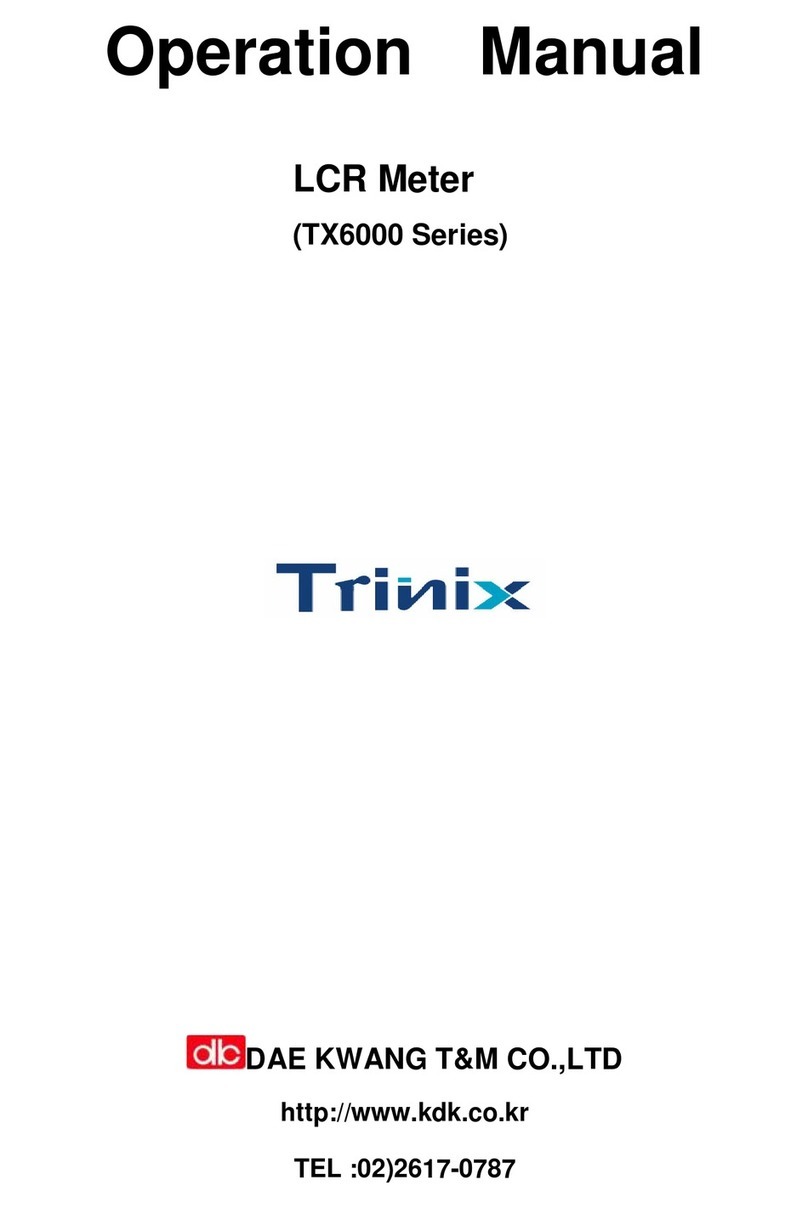
Trinix
Trinix TX6000 Series Operation manuals

Electro Industries
Electro Industries Nexus 1262 Installation & operation manual
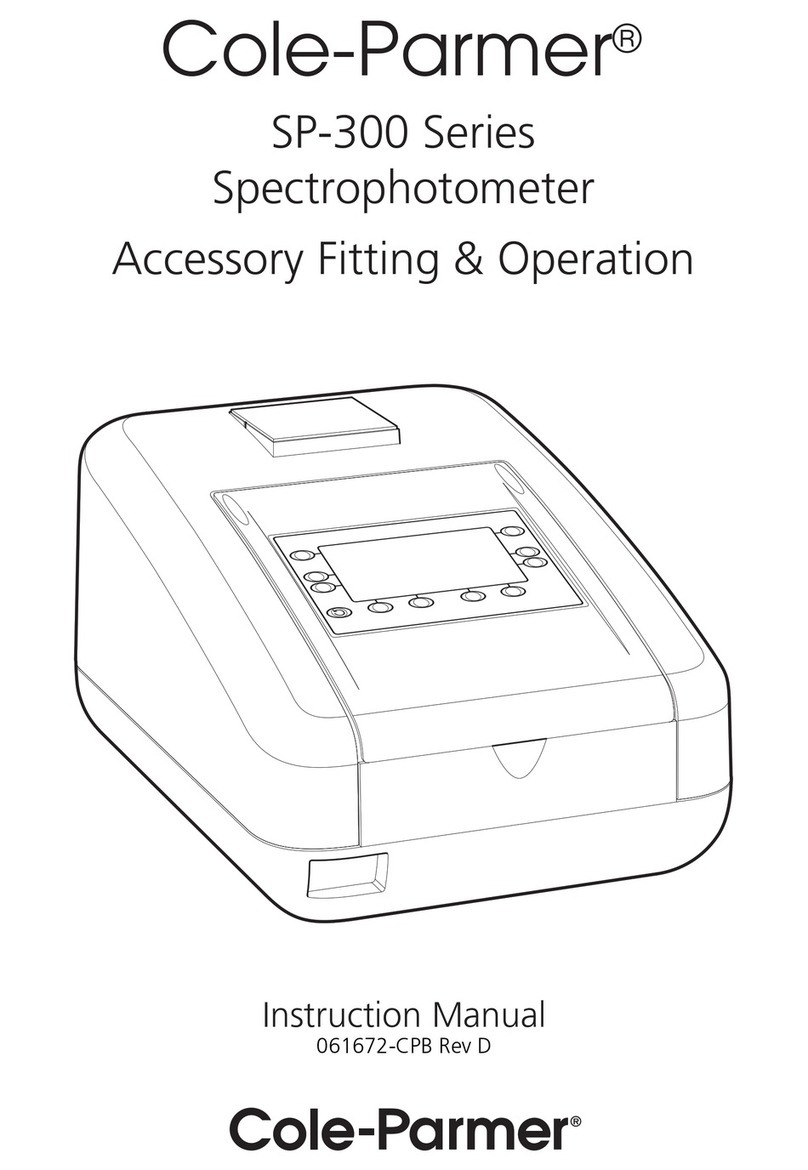
Cole Parmer
Cole Parmer SP-300 Series instruction manual
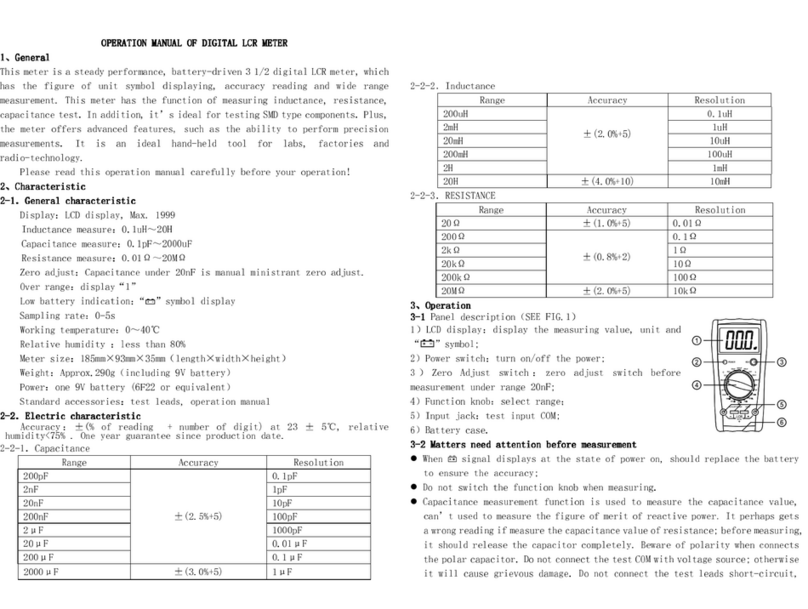
AIDETEK
AIDETEK DM4070 Operation manuals
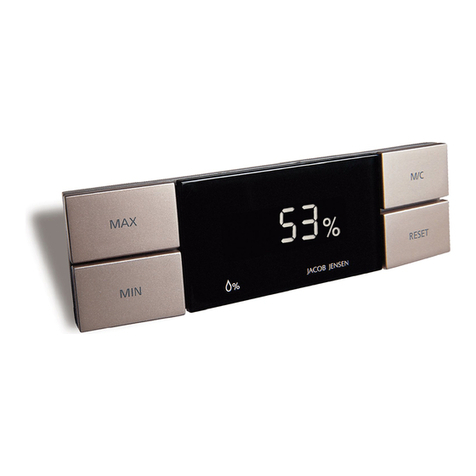
Jacob Jensen
Jacob Jensen Hygrometer user manual
